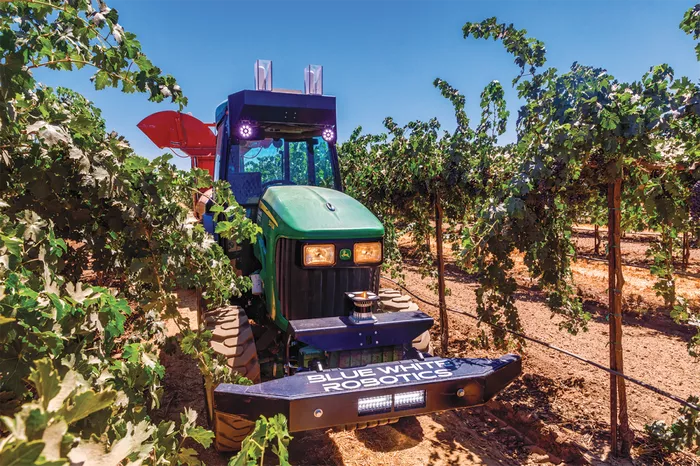From flame-wielding robots to driverless tractors, autonomous technology is sparking a revolution across American farmlands. Yet, despite California being a hub for these agricultural innovations, its farmers remain unable to legally use much of this technology.
Larry Jacobs, a California farmer with 40 years of experience, expressed his frustration bluntly: “It’s crazy. It doesn’t make any sense.”
Outdated Law Blocks Use of Autonomous Farm Equipment
California’s ban on autonomous agricultural machinery traces back to safety regulations written in the 1970s. These rules require a human operator to be “stationed” at the controls of farm equipment. Although originally designed for a different era, these regulations effectively bar the use of driverless farming tools today.
This restriction comes despite California producing more than 40% of the United States’ vegetables and nearly 70% of its fruits and nuts, according to USDA data. The state leads in agricultural innovation, yet its farmers cannot reap the full benefits.
Labor Shortages Threaten Food Prices
Jacobs and many other farmers see autonomous equipment as essential to addressing severe labor shortages. “Our biggest problem is labor,” Jacobs said. “If we don’t have people to pick the crops, prices for apples, tomatoes, and other foods will rise—and that problem will only worsen.”
The U.S. Bureau of Labor Statistics projects that more than 88,000 farming jobs will go unfilled annually over the next decade. Meanwhile, the average farmer’s age approaches 60.
Igino Cafiero, an engineer at agricultural giant John Deere, noted, “Farmers just can’t find people to fill these jobs. Technology like this is essential to drive agriculture forward and attract the next generation of farmers.”
Industry Pushes Forward, But California Holds Back
John Deere, a pioneer in autonomous farming tools, has been developing driverless tractors and other equipment for over 20 years. Its latest autonomous tractors are currently in use in 11 states — but not California.
Clint Masterson, John Deere’s product manager for orchard autonomy, explained, “We want to do things right by working with California legislators to clarify the law before releasing products here.”
In 2022, Monarch Tractor, maker of the world’s first fully electric, driver-optional tractor, petitioned California regulators to update the rules. The state’s Occupational Safety and Health Standards Board rejected the proposal in a close 4-3 vote, citing safety concerns.
Ironically, while autonomous farm vehicles remain banned, California has approved driverless cars to ferry passengers on busy public roads. Over 30 companies, including Tesla and Waymo, hold permits to test autonomous vehicles on California streets.
Farmers argue that autonomous farm machines pose far less risk than driverless cars operating in dense urban environments. “The danger of autonomous equipment in open fields is much lower,” Jacobs said. “It doesn’t make any sense.”
Slow Progress on Regulatory Review
After the 2022 rejection, regulators promised a task force to study autonomous farming equipment. But three years later, the advisory committee has met only three times and issued no recommendations.
Cal/OSHA, responsible for workplace safety enforcement, recently indicated that autonomous equipment use would only violate regulations if workers are present or have access to the area. In a memo dated August 30, 2024, Cal/OSHA Director Debra Lee wrote that if a worksite has no employee access, using autonomous farm vehicles there would not constitute a safety violation.
California Assemblyman Juan Alanis, representing a key agricultural region, calls for new legislation to allow autonomous technology on farms. “It’s the future,” Alanis said. “If we wait too long, other states and countries will move ahead because we’re stubborn.”
Farmers agree that the current legal ambiguity is insufficient to support real innovation.
Jacobs summed up the urgency: “It’s time for legislators to update the law. Crops are being left in fields because there isn’t enough labor to harvest them.”
Related topics:

